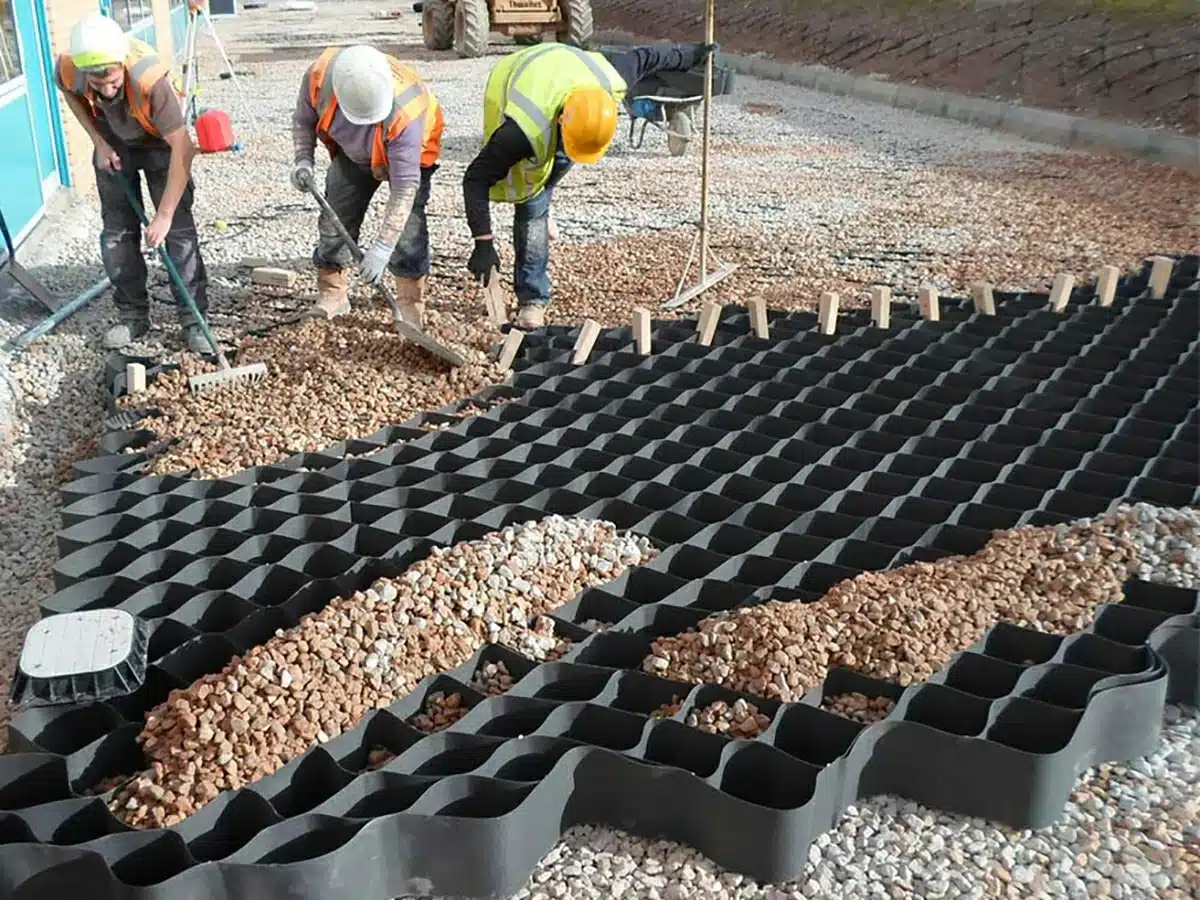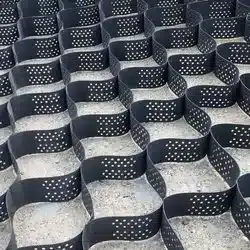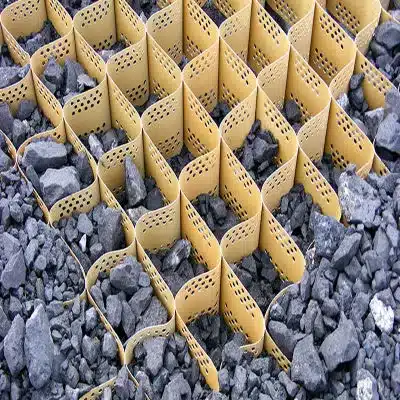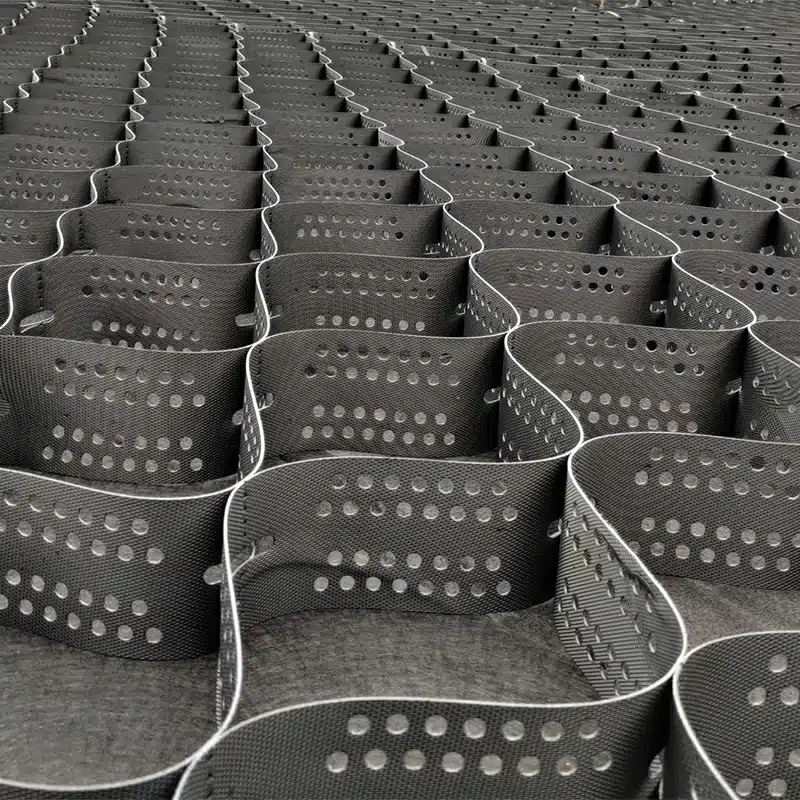+86-159 9860 6917
info@geofantex.com
geofantex@gmail.com
+86-400-8266163-44899
The integration of vegetation with advanced geocell technology marks a significant leap forward in sustainable landscape engineering. Vegetated geocells are not just a solution to soil erosion and instability; they are a testament to the harmonious balance we can achieve between construction and nature. This article explores the innovative world of vegetated geocells, shedding light on their material composition, purpose, benefits, and their pivotal role in promoting environmental sustainability.

What Exactly Are Vegetated Geocells?
Vegetated geocells are a type of geosynthetic material used in civil engineering and landscaping to reinforce and stabilize soil, particularly on slopes and embankments. They are three-dimensional, honeycomb-like structures made from high-density polyethylene (HDPE) or other durable materials. The cells are filled with soil, gravel, or other materials and then planted with vegetation.
Key Features of Vegetated Geocells:
- Structure and Material: The geocell structure is flexible and lightweight, making it easy to transport and install. The honeycomb design allows the cells to conform to the terrain, providing uniform support and stabilization.
- Soil and Vegetation Integration: The cells are filled with soil or a soil-aggregate mix, and vegetation is planted within the cells. The roots of the plants grow through the geocell, further anchoring the soil and providing additional stability.
- Erosion Control: Vegetated geocells are highly effective in controlling soil erosion, particularly on steep slopes. The combination of the geocell structure and plant roots helps to prevent soil from being washed away by rain or water runoff.
- Environmental Benefits: By promoting the growth of vegetation, vegetated geocells enhance the aesthetic appeal of landscapes and contribute to environmental sustainability. The vegetation also helps to absorb and filter water, reducing surface runoff and improving water quality.
- Applications: Vegetated geocells are commonly used in slope stabilization, riverbank protection, channel linings, retaining wall facings, and other erosion-prone areas. They are particularly beneficial in areas where traditional hardscaping solutions might not be suitable.
Advantages of Vegetated Geocells:
- Flexibility: Can be adapted to various terrains and environmental conditions.
- Durability: Made from high-strength materials that can withstand heavy loads and harsh conditions.
- Sustainability: Encourages the growth of natural vegetation, which supports biodiversity and improves the environment.
- Aesthetics: Provides a green, natural-looking solution for soil stabilization and erosion control.
Overall, vegetated geocells are an innovative and environmentally friendly approach to soil reinforcement and erosion control, offering both functional and aesthetic benefits.
Why Are Vegetated Geocells So Important?
Vegetated geocells are important because they combine the benefits of geocell technology with the added advantage of vegetation. Geocells themselves are a type of cellular confinement system used to reinforce and stabilize soil. When they’re vegetated, they not only provide soil stabilization and erosion control but also promote ecological benefits. Here’s why they’re particularly significant:
- Erosion Control: Vegetated geocells create a strong, stable structure that helps prevent soil erosion, particularly on slopes or areas prone to heavy rainfall or runoff. The plants within the geocells help bind the soil together and absorb water, further reducing the risk of erosion.
- Soil Stabilization: The cellular structure of geocells helps distribute loads more evenly, reducing soil movement and settling. When vegetation grows in these cells, it further stabilizes the ground as plant roots help hold the soil in place.
- Environmental Benefits: Vegetation enhances the environment by promoting biodiversity, improving air quality, and supporting local ecosystems. The plants act as natural filters, improving water quality by reducing runoff and absorbing excess nutrients.
- Aesthetic and Sustainable Design: Vegetated geocells are often used in landscaping or infrastructure projects where aesthetics are important. They can blend with the natural environment while providing a sustainable solution for erosion control and soil management.
In short, vegetated geocells are vital for improving both the stability and ecological health of various landscapes, making them especially important for sustainable infrastructure and environmental management.

What Makes the Material of Vegetated Geocells Unique?
The material used in vegetated geocells is typically high-density polyethylene (HDPE) or other polymer variants known for their durability, flexibility, and environmental resistance. These materials are engineered to withstand harsh weather conditions, chemical degradation, and physical wear and tear, ensuring a long service life. Additionally, the permeable nature of geocells allows for efficient water drainage and air circulation, crucial for healthy plant growth. The choice of material also reflects a commitment to sustainability, often being recyclable and having a minimal environmental footprint.
How Do Vegetated Geocells Contribute to Sustainable Development?
Vegetated geocells contribute to sustainable development by offering a green solution to common engineering challenges. They reduce the need for traditional, often non-sustainable, construction materials like concrete and asphalt, minimizing habitat disruption and pollution. By promoting vegetation growth, they enhance carbon sequestration, support biodiversity, and provide natural insulation and cooling effects in urban areas. Furthermore, their application in rainwater management and erosion control plays a critical role in preserving natural water cycles and soil quality.
Vegetated geocells represent a forward-thinking approach to landscape engineering, blending the robustness of geocell technology with the ecological benefits of vegetation. This innovative solution addresses the pressing need for soil stabilization and erosion control while promoting environmental sustainability and biodiversity. As we delve into the specifics of what vegetated geocells are, their importance, the uniqueness of their material, and their contribution to sustainable development, it becomes clear that they are more than just a construction material; they are a key component in the future of green infrastructure and landscape design. By embracing vegetated geocells, we pave the way for a more sustainable and ecologically balanced world.



Get Free Sample
We’ll respond as soon as possible(within 12 hours)





















